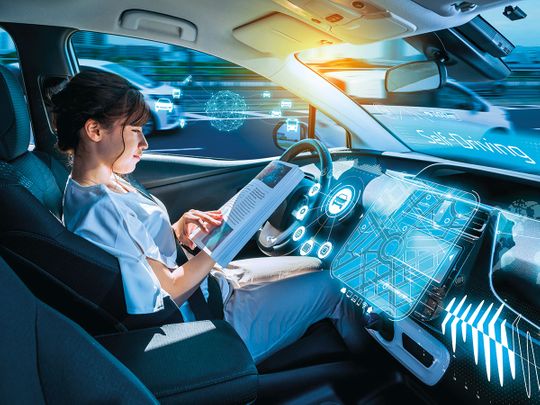
“The countries of the GCC need to focus on delivering economic growth, improving the social well-being of their populations and play an increasing role in safeguarding the environment …”
Leaders across the GCC could agree on the shared ambition of delivering such a set of outcomes. Over the last decade, many have realised the critical role that the transport sector has to play in delivering these outcomes.
In fact, in the ambitious plans for economic growth and diversification, many governments have laid down a challenge for the transport industry. While this may sound like hyperbole, a body of work over the last decade has firmly underlined the economic importance of a world class transport system.
For example, “The Mobility Opportunity”, published by Teneo and Siemens in 2015, identified a global economic opportunity of $15 trillion (Dh55 trillion) over the next 30 years through improved networks. This is borne out in regional success stories — such as the Dubai Metro, estimated to have delivered economic benefits of Dh24 billion since its launch seven years ago.
The World Economic Forum identifies environmental threats, access to resources, and social inequality as the three biggest challenges facing cities. There are few services as well placed to address these challenges as an efficient and affordable mass transit network.
The importance of such a network has not been lost on the GCC leadership, with ambitious transport plans set forth, not least in the shape of the GCC Railway. Projects and plans have evolved in the face of the oil price collapse and subsequent funding constraints, but with $250 billion worth of transport investments planned for the coming decade, it is clear ambitions remain high.
With funding now committed for a number of major transport programmes, the potential to realise these ambitions is established.
However, the successful delivery of transport infrastructure alone is not sufficient. The onus now falls on the transport sector to turn this promise of investment into economic, social and environmental outcomes that will drive the continued growth of the region. For this to happen, governments will need to settle on models for effective private sector participation, while it is up to the industry to now deliver on this investment.
To do this, the sector needs to focus on three key priorities.
First, the transport network must work hand in hand with the business community across the region?: Transport can only deliver maximum value if it connects people with employment and goods with markets, and the industry cannot work in a vacuum if it going to do this.
Networks must form close links with planners and developers to ensure sustainable housing developments offer easy access to the growing transport infrastructure. The major employers can provide the best possible access to jobs across an increasingly 24x7 economy. The industry can ensure transport infrastructure is well positioned to respond to ongoing changes that will impact the industrial and mining sectors and the commodity market over coming years.
Second, transport needs to demonstrate a clear path to financial sustainability: While public investment is appropriate to jump-start the development of transport networks, the industry must not rely on state support for ever.
Rather operators need to make sure they generate sufficient income to cover costs, combining farebox revenue with innovative approaches to monetise the value of passenger travel time and usage data. Land value capture programmes will be key to harnessing income from third-party sources — such as property and retail — which benefit from the economic value generated.
Operators and owners must also look to control costs, harnessing technology to automate services, increase capacity, and generate predictive O & M (operation and maintenance) regimes. To unlock this value, governments and regulators should embrace the output-driven contract structures that enable supplier innovation to flow through to reduced costs and an improved passenger experience.
Third, the region needs to be innovative in considering the future state of mobility, and embracing the disruption underway in traditional transport models: Cities in the UAE are playing a leading role in nurturing some of the more innovative technology to transform transport — from Hyperloop, which has the potential to revolutionise intercity travel, to self-driving cars, central to Dubai’s autonomous transport strategy.
At a smaller level, technology also offers new ways to break down traditional barriers to public transport usage. For example, through door-to-door journey planning and the continued roll-out of account-based payment and ticketing, as well as new hybrid models of transport through the growth of ride sharing.
Such disruptive developments can offer significant benefits for passengers and businesses. The sector should welcome these, with both regulators and operators working together to embrace the potential of new technology, provided that each investment improves the passenger experience.
That said, innovation is not limited to the technology itself, but will be required in the business models and contracting agreements that will maximise the economic value, while balancing risks between the government and private sector.
Over the last 20 years, the transport industry has won the debate that it should be part of that future. With investments now secured, and the role of the private sector ever more important, now is the time for the industry to deliver.
— Matt Lovering is Transport & Mobility Consulting Lead, Teneo.












